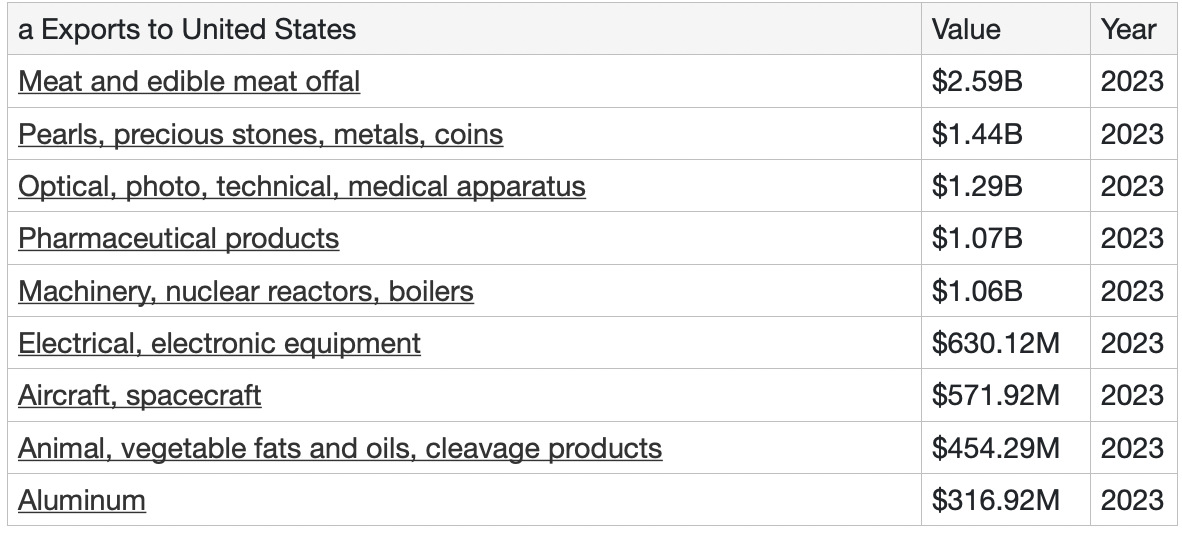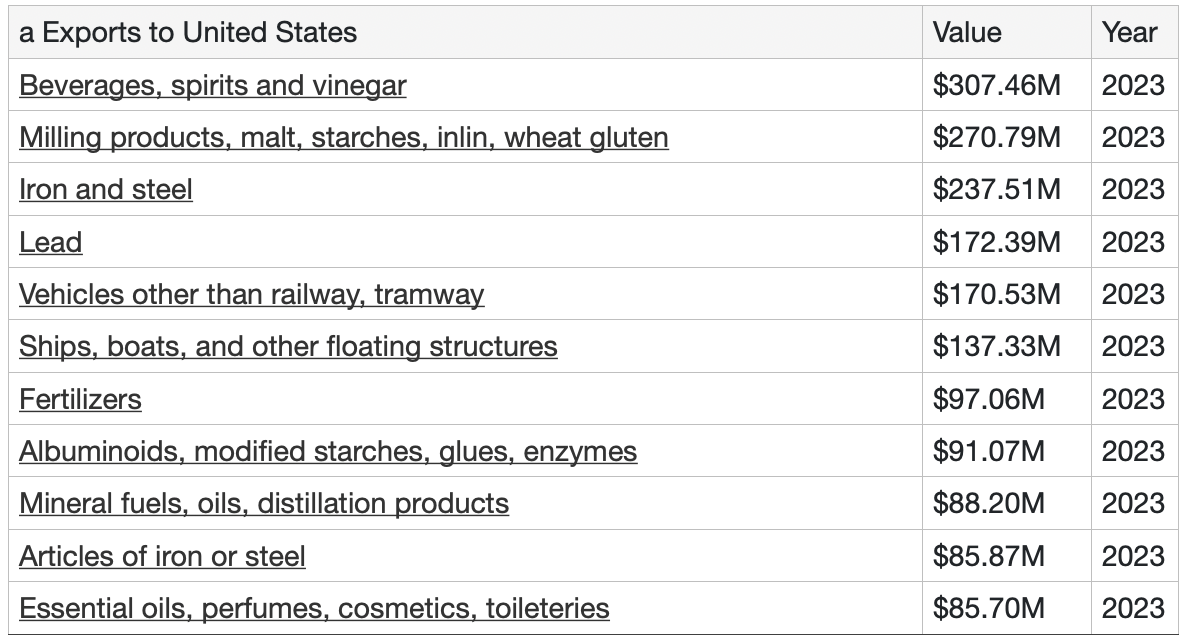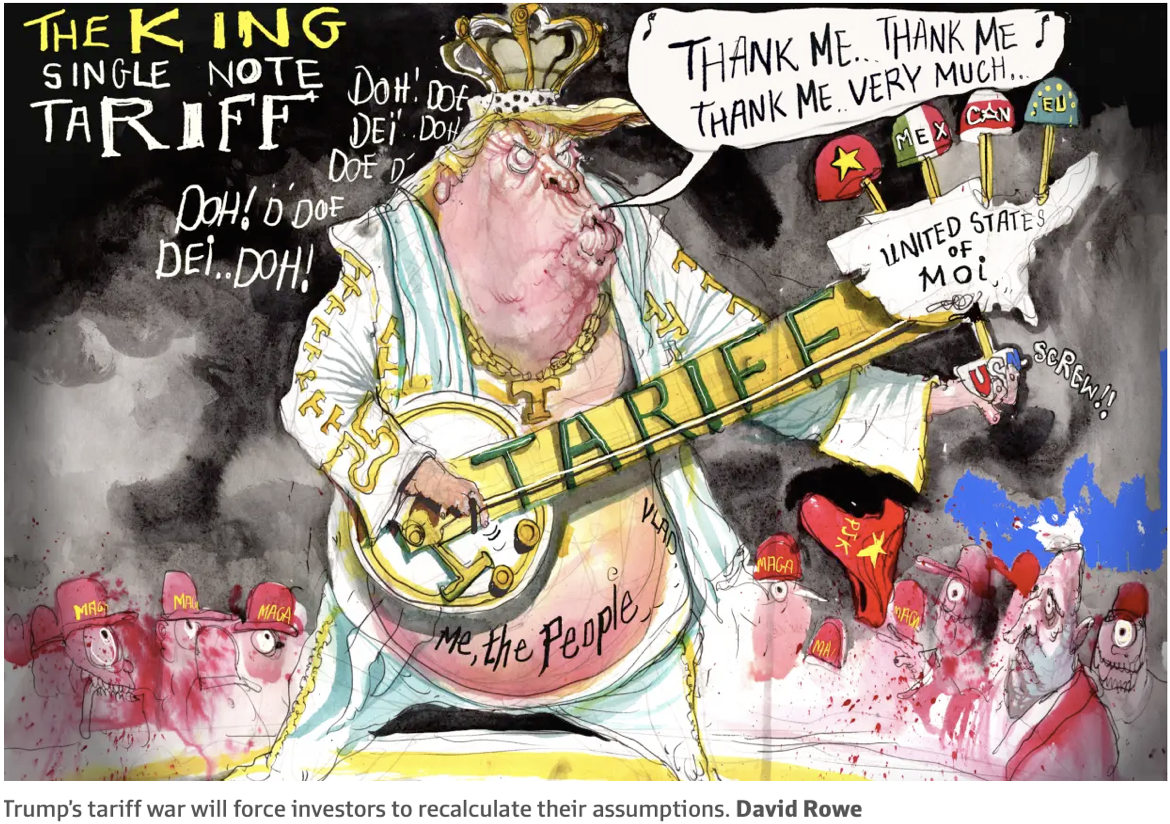February 5, 2025

(WHERE DOES AUSTRALIA STAND IN RELATION TO THE U.S. AND TRUMP 2.0)
February 5, 2025
Hello everyone
The United States makes more from Australia than Australia makes from the United States in terms of trade and investment. The United States is Australia’s largest economic partner.
TRADE
In 2023, Australia exported $12.59 billion to the United States.
The United States has a trade surplus with Australia, with the surplus in goods and services favouring the United States.
The United States is Australia’s third largest trading partner for goods.
The United States is the third most popular tourist destination for Australian residents.
INVESTMENT
The United States is Australia’s largest foreign investment destination.
At the end of 2023, the United States had invested $1.17 trillion in Australia.
Below is a list of the top twenty exports to the United States.
This is by no means everything on the list.
The prospect of an international trade war with the U.S. now must be factored into the realm regarding inflation and interest rates in Australia. The likely downward trajectory of inflation and interest rates has been complicated by Trump’s “bull at a gate” mentality over tariffs on goods from many countries.
Vowing to stick to his election promise, Trump wants the U.S. to return to a “golden age” of U.S. manufacturing. China has been loud and clear that countermeasures are coming. And Canada has already responded by slapping a 25% tariff on a range of U.S. imports. Certain provinces have indicated that they will no longer buy American goods, so public influence will spin the tables against Trump’s actions.
Mexico, too, has indicated that it will also levy retaliatory duties on American goods.
It was initially understood that Trump’s rationale for threatening tariffs on Canada and Mexico was to force these countries to stem the flow of fentanyl and illegal immigrants across the border into the U.S. But it seems they have become more than a bargaining chip and look certain to be locked into place to protect America and make it great again, even though it may be a painful journey.
Trump has also drawn attention to his intention to impose tariffs as early as mid-February on imports from all countries of computer chips, pharmaceuticals, steel, aluminum, copper, oil, and gas into the U.S.
The implications for Australia’s open and export-oriented economy, which greatly benefits from free trade, are two-fold.
Australia risks importing higher inflation. And, secondly, Australian exports to the U.S. risk getting caught up in the trade war. For instance, blood plasma made by biotech giant, CSL, is among the $1.7 billion a year pharmaceutical exports that are at risk of being hit by Trump’s tariffs if they are imposed on Australia.
The potential hit to costs and sales for Australian companies that do business in the U.S. is significant. The Albanese government will need to act swiftly to negotiate an agreement with the U.S. to minimize the potential damage from Trump’s trade war.
There are many other effects too. Disruptions to international trade that slow the world economy would drag on Australia’s 0.3 annual rate of GDP. Effects could include the acceleration of the economic slowdown in China, which is Australia’s main trading partner.
The looming trade war has consequences not only for inflation and interest rates but also for economic growth.
++++++++++++++++++++++++++++++++++++++++++++++++++++++++++++++++++++++++
Trump’s latest expansionist tendency includes wanting to take over the Gaza Strip. He wants to transform it into the “Riviera of the Middle East.” This is on top of wanting Greenland, and the Panama Canal.
Instability on the geopolitical front could go from amber to red.
Cheers
Jacquie





